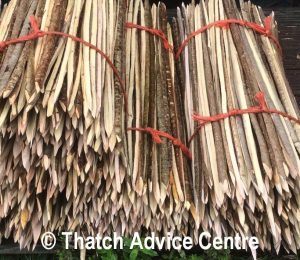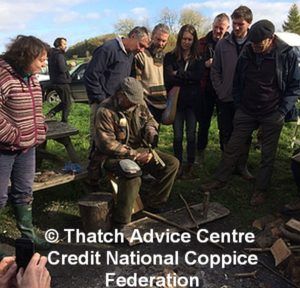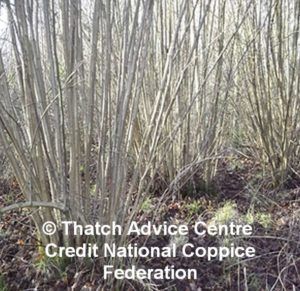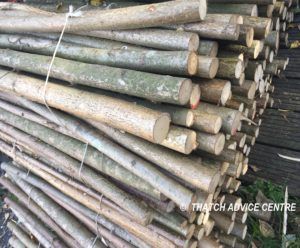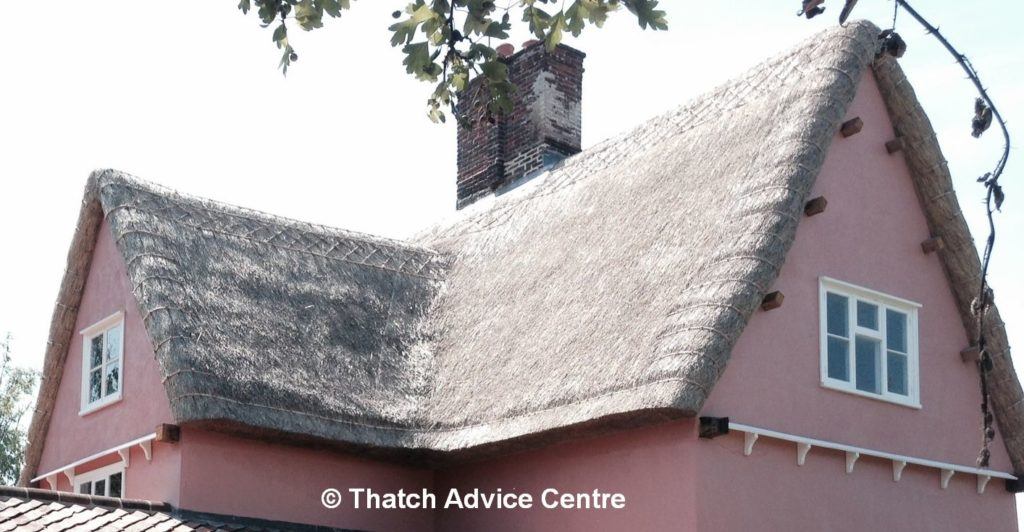Why Coppicing is Important to Thatched Roofs
Many of the older crafts and traditional skills go hand in hand and this is the case with coppicing and thatching. We felt it was time to tell you a bit more about what coppicing is and how it fits in with thatched roofs.
What Coppicing Produces for Thatching
Spars and liggers are products from coppicing which are used in thatching. Spars are the fixings (usually hazel), which are twisted to make a U shaped peg which holds the thatch in place. Liggers are the longer sections of wood which are used horizontally on ridges and around eaves on Longstraw properties.
We asked our friends at the National Coppice Federation, for some more information on coppicing; What is Coppicing? What Wood is used in Coppicing? And how does Coppicing work? Their response is appreciated.
What is Coppicing?
“Coppicing is the oldest form of Woodland Management dating back thousands of years. Our Neolithic ancestors discovered that when trees were cut down close to ground level, the stump would sprout a multitude of stems that were smaller, fast growing and easily utilised. As the stump remains there is no need to replant.”
What Wood is Used in Coppicing?
“Most of our native Hardwood Trees in Britain will coppice freely. The most frequently used species are hazel, ash, oak, willow, field maple and (although not a native tree) sweet chestnut.
Some of the more common uses are:
Hazel: Hurdles, Thatching Spars, Bean and Pea Sticks and Walking Sticks.
Ash: Tool Handles, Gates and Tent Pegs
Oak: Laths, Fencing Materials, Gates, Tiles and Small Timber
Sweet Chestnut: Fence Posts, Cleft Rails, Stakes and Walking Sticks
All of these can also be used for charcoal and rustic furniture.”
How Does Coppicing Work?
“A coppiced woodland is divided into compartments or ‘coupes’. Each coupe is cut in rotation so that the amount of material harvested is the same amount the woodland has grown each year ensuring a sustainable continuity of supply.
Harvesting coupes in rotation creates niche environments and different conditions for a wide range of biodiversity to prosper. The introduction of light at the woodland floor encourages wildflower and natural regeneration of trees and shrubs. Many woodland species including wildflowers, birds, mammals and butterflies have been in drastic decline during the 20th century due to the reduction of coppice management.
By purchasing British coppice materials such as Beanpoles, hedging stakes, thatching spars and hurdles you help maintain and protect woodland biodiversity, support traditional crafts and rural employment. An increase in demand will see an increase in those who can supply.”
Coppicing and Spar Making
Many thatchers used to be able to make their own spars, but this does not seem to be the case so much now. Whether the coppice worker makes the spars or just produces the gads to be made into spars we have noticed that there are not as many spar makers as there used to be.
This lack of production of enough thatching spars from coppiced woodland has led to many spars being imported to the UK from abroad, even ready twisted. Is it a sign of the times or should we be more supportive of each other to get more of our woodlands managed to produce our own materials in this country? Or do the quantities not match up?
Coppicing and Thatching #workingtogether for the Future
One thing is for sure; we want to support each other as coppicing and thatching are both rural skills. Our lovely thatched properties would not look the same without the wooden spars and liggers holding down and decorating the thatch. Would it be even possible to thatch without them?
Coppicing, like many traditional skills is therefore well worth preserving and promoting. Managed woodland by coppicing does not just benefit thatching; it also helps the environment, wildlife, provides employment and quality sustainable materials. Working together is so important!
Coppicing is also great for Wildlife.
A great short You Tube video from the Forestry Commission which explains why and shows the different stages of a coppice wood.


